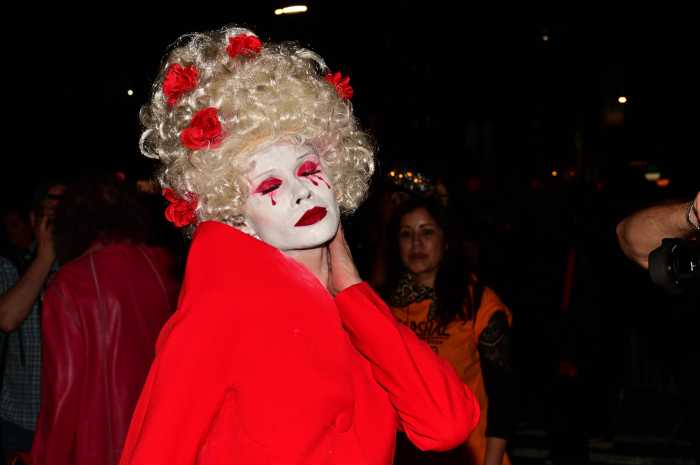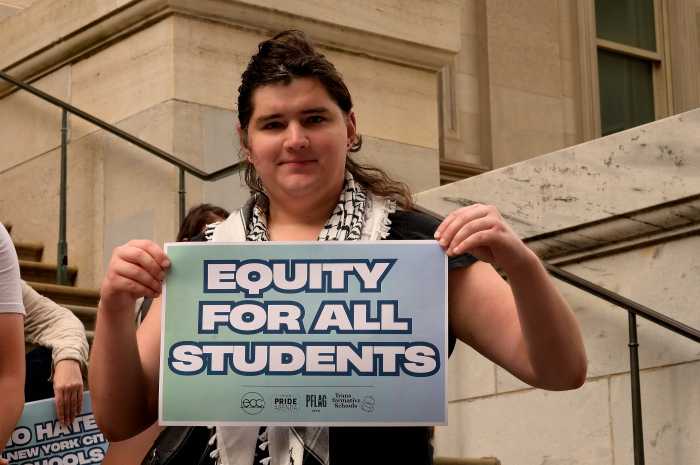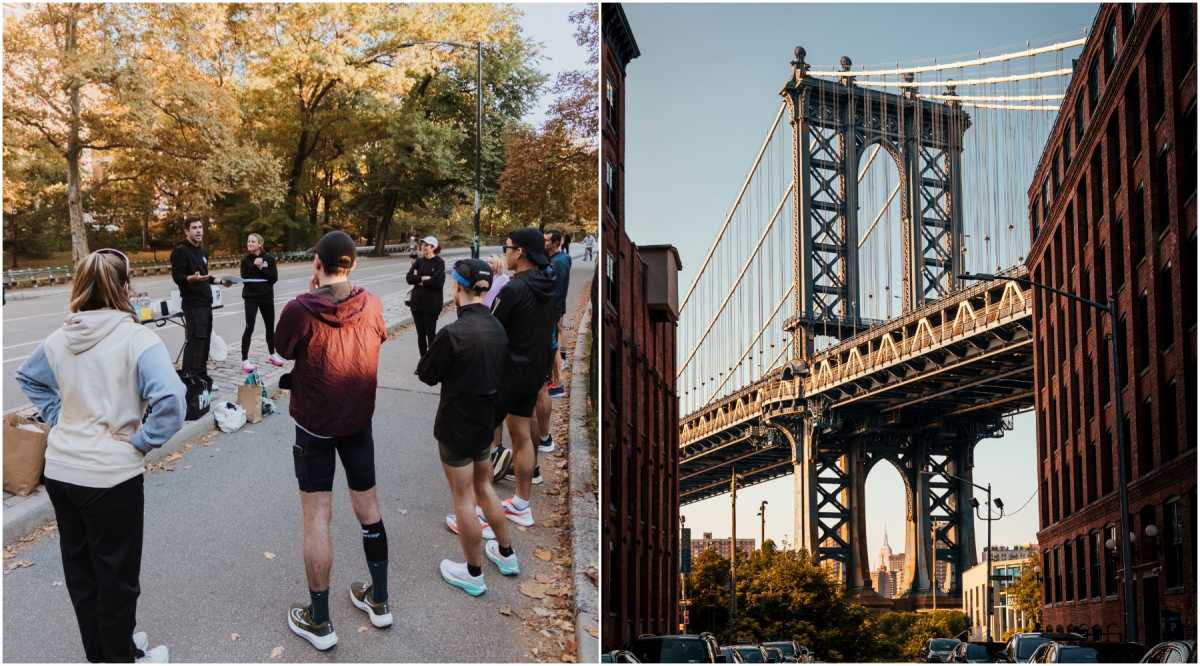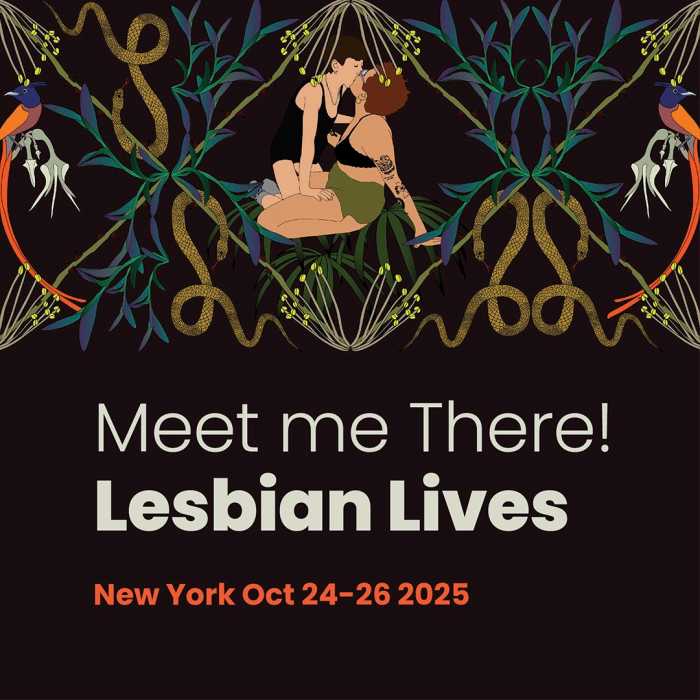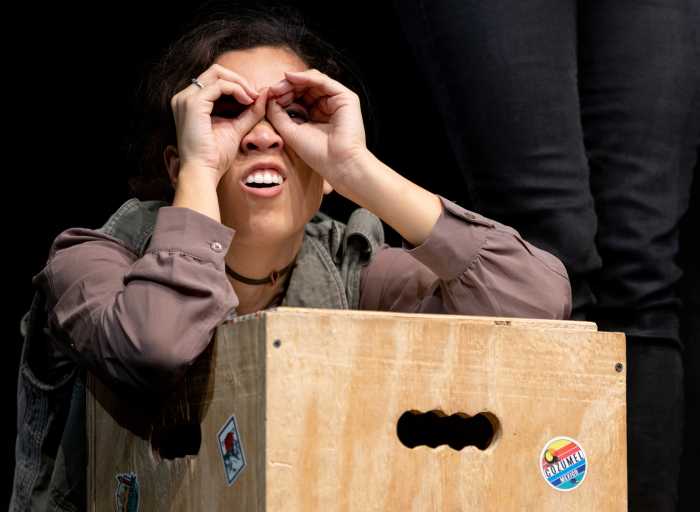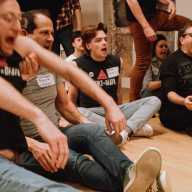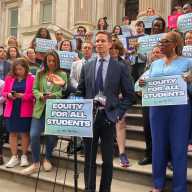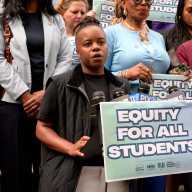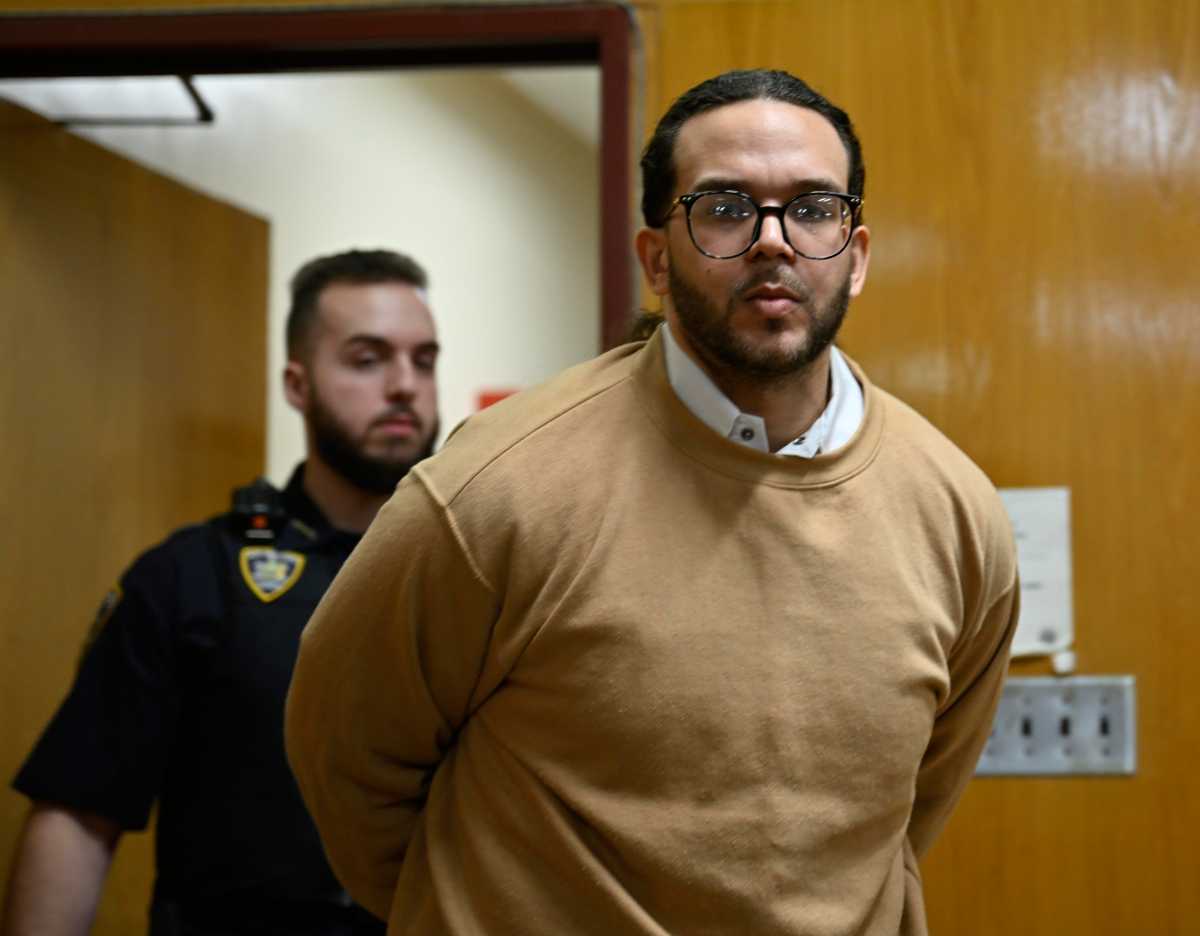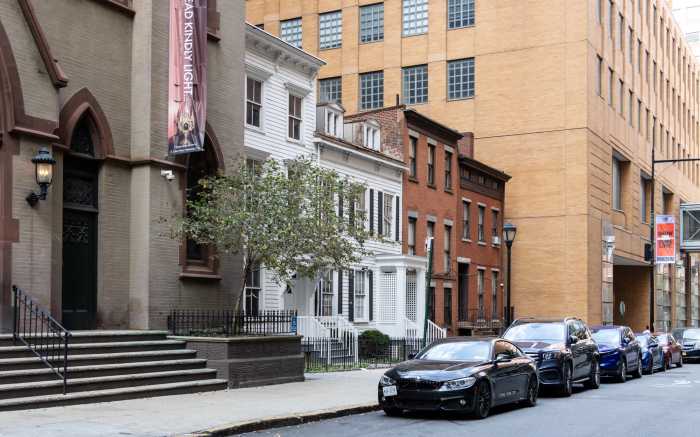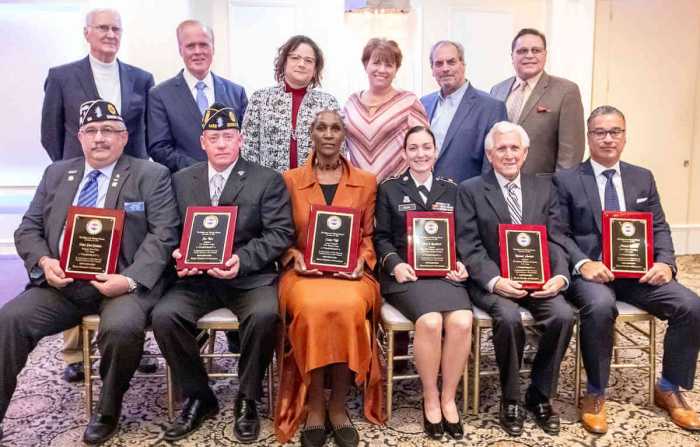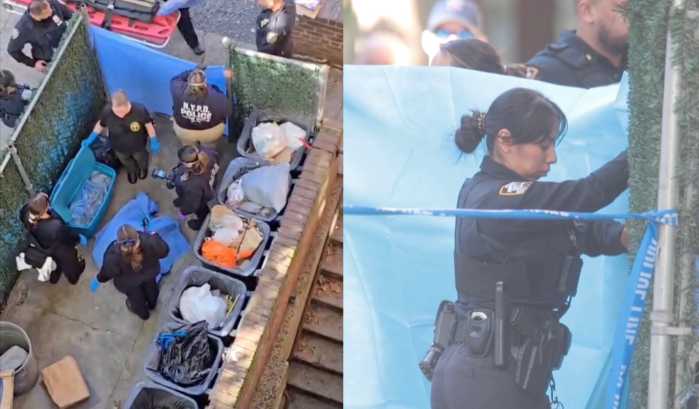A rendering of the relocated cyber cafe at the east end of an expanded first floor lobby. | LGBT COMMUNITY CENTER
Nearly a dozen years after New York’s LGBT Community Center completed a major renovation that required it to vacate the space for more than two years, it is poised for a significant facelift that will allow the facility to remain open but should produce dramatic results at its conclusion.
A year ahead of its 30th anniversary in a venerable former school building on West 13th Street in Manhattan, the Center is planning for $7.5 million in renovations to its main lobby, the first floor Kaplan Assembly Hall, the Lerner Auditorium on the third floor, the garden at the west end of its property, and its hallways and elevators.
$5.7 million of the total cost has been available for several years from the New York State Dormitory Authority and the New York City Economic Development Authority. The Center is raising the remainder — $1.8 million.
The Calamus Foundation, which funds LGBT and HIV-related organizations, has offered a challenge grant of up to $500,000, under which it will match individual donations on a one-to-one basis. According to Center executive director Glennda Testone, nearly all of the dollars needed to max out the Calamus challenge have been pledged, and everyone on the Center’s board has made a commitment to contribute.
According to its website, the 1998-2001 renovation cost roughly $13 million.
The third floor Lerner Auditorium shown with improved acoustics and video projection capabilities. | LGBT COMMUNITY CENTER
Testone told Gay City News that the new improvements are aimed at enhancing “user experience.” Focus groups identified a number of concerns with the building’s layout and amenities, starting with the lobby’s traffic flow, which gives many the uncomfortable feeling they are supposed to check in upon arrival at the centrally placed reception desk. Other major issues pinpointed include the acoustics in the two major meeting spaces — the Kaplan Assembly Hall and the Lerner Auditorium — and the operation of the building’s elevators.
According to Testone, the New York Times, which previously held some of its popular TimesTalk programs focused on LGBT themes at the Center, withdrew, complaining about the poor quality of sound in Kaplan and Lerner.
The upgrades, which could begin by year-end, she said, “are all in line with a vision for the Center that offers impeccable social services in a setting that everyone who walks in feels is reflective of their lives.” She acknowledged that, as with the opportunities for TimesTalk programming, the overhaul will also improve the Center’s capacity for staging cultural events of broad interest to the LGBT community and others.
“Everyone who comes to the Center should have a good experience,” Testone said. “I don’t want to leave my straight friends at the door.”
The opportunity to improve the building’s physical plant comes, however, at a time when the Center has struggled to maintain government support for its operations, particularly its delivery of social services. In the year ending June 30, 2009, its total revenues stood at $9.5 million. For the year ending June 30 of last year, revenues were $7.5 million, reflecting a decline in total government grants plus Medicaid revenues from roughly $4.82 million to $3.02 million.
As with many AIDS organizations, the Center’s HIV work has been hobbled by a shift in government resources away from traditional prevention activities toward greater testing aimed at getting those who are positive into treatment as quickly as possible, thereby reducing their infectivity. This is the same trend that has created a financial crisis at Gay Men of African Descent, the only HIV group focused exclusively on that population in New York.
Testone also noted that the elimination of discretionary state funding earmarked by individual legislators has had a severe impact. In one past year, that category of funding represented $2 million in revenues.
Still, Testone emphasized, the Center’s Oasis recovery program, its youth enrichment effort, its smoking cessation campaign, and a new State AIDS Institute-funded program for transgender women are all working effectively. The Center is also in the first of a three-year, $690,000 program to provide LGBT foster care services. That program, funded privately by an anonymous donor, could be a candidate down the line for government support to continue into year four and beyond.
Services for LGBT immigrants and the Center’s lesbian cancer initiative — both funded on a shoestring, Testone said — are areas for which it hopes to establish firming footing.
“I would love to have a commitment of $5.7 million in government funding for operations, for social services,” she said, noting that the commitments from the Dormitory and Economic Development Authorities are limited to capital projects.
A rendering of a café at the west end of an expanding lobby facing the garden. | LGBT COMMUNITY CENTER
The renovation plans envision the ground floor lobby being opened up by taking the rooms on the east and west ends out, moving the reception desk toward the east end, moving the Center’s public use cyber center downstairs to the area near reception, and creating a café at the lobby’s west end. After some controversy, the Center came to agreement with SAGE, Services and Advocacy for GLBT Elders, to relocate its meeting space to the second floor, directly above its current location.
In the Kaplan Assembly Hall, the scene of many large and raucous ACT UP meetings in years past, three of the nine columns that impair sight lines can safely be removed, and the walls will be upgraded and some windows opened up. Testone emphasized that the murals in that room as well as the iconic Keith Haring mural upstairs will be meticulously protected in the renovation.
“I don’t want to lose the character this building has always had,” she said.
In the cavernous Lerner Auditorium on the third floor, acoustical and lighting improvements will be made and a permanent projection screen will be installed.
Elsewhere in the building, some new rooms will be created while others will be subdivided to allow greater flexibility. A catering kitchen, designed to facilitate the heating of food brought into the Center as well as service in the café, will be added; hallways will be refurbished; and the elevators, out of date after only a dozen years, will be replaced. The garden will also be re-landscaped, and the gate that has for decades hidden it from street view will be replaced with one that allows users to look out onto 13th.
On one thorny issue that has bedeviled Testone’s tenure at the Center, her position remains the same. A year and a half ago, complaints about the use of space there by Siege Busters and Queers Against Israeli Apartheid (QAIA), both critics of the Jewish State’s treatment of its Palestinian residents, led her to impose a ban on all groups that organize around the Israeli-Palestinian conflict.
Critics of that decision charged the policy was out of line with the Center’s tradition of opening up its doors to the LGBT community’s full diversity and of inviting rather than curbing controversy. Some accused the Center of buckling to demands from some wealthy donors
Those who complained about Seige Busters and QAIA getting the use of space said their activities were divisive, with some suggesting that anti-Semitism or at least insensitivity to the complex realities on the ground in the Middle East were at play on the part of those two groups.
Testone expressed confidence that the ban put in place is working and said she saw no broader issue regarding access to the Center that needs addressing.





